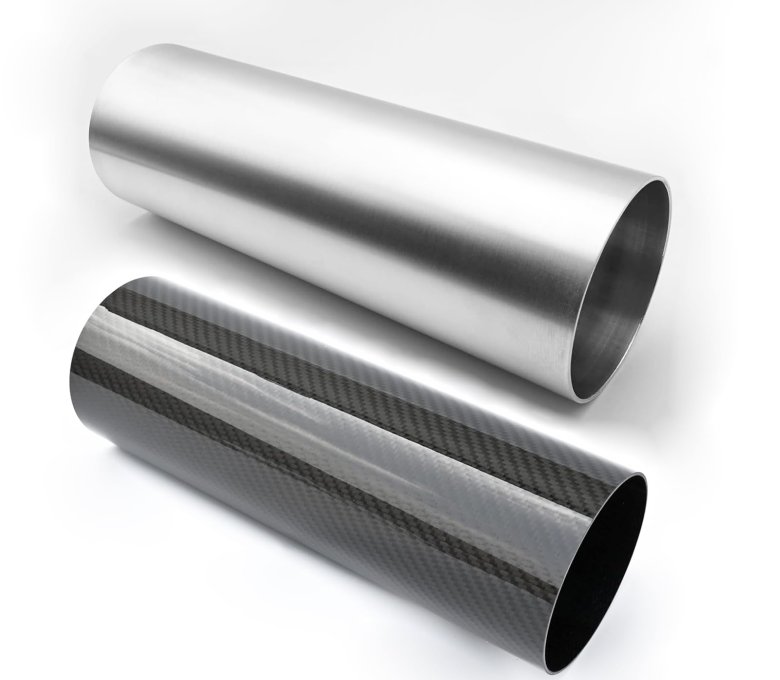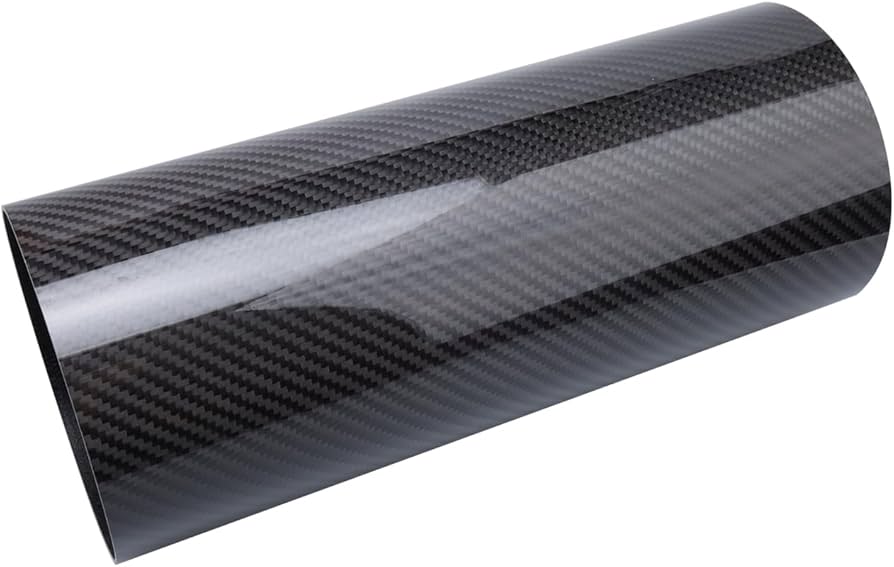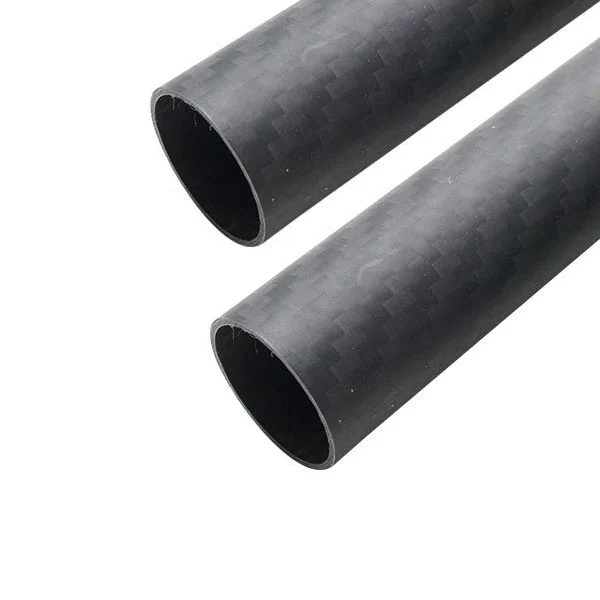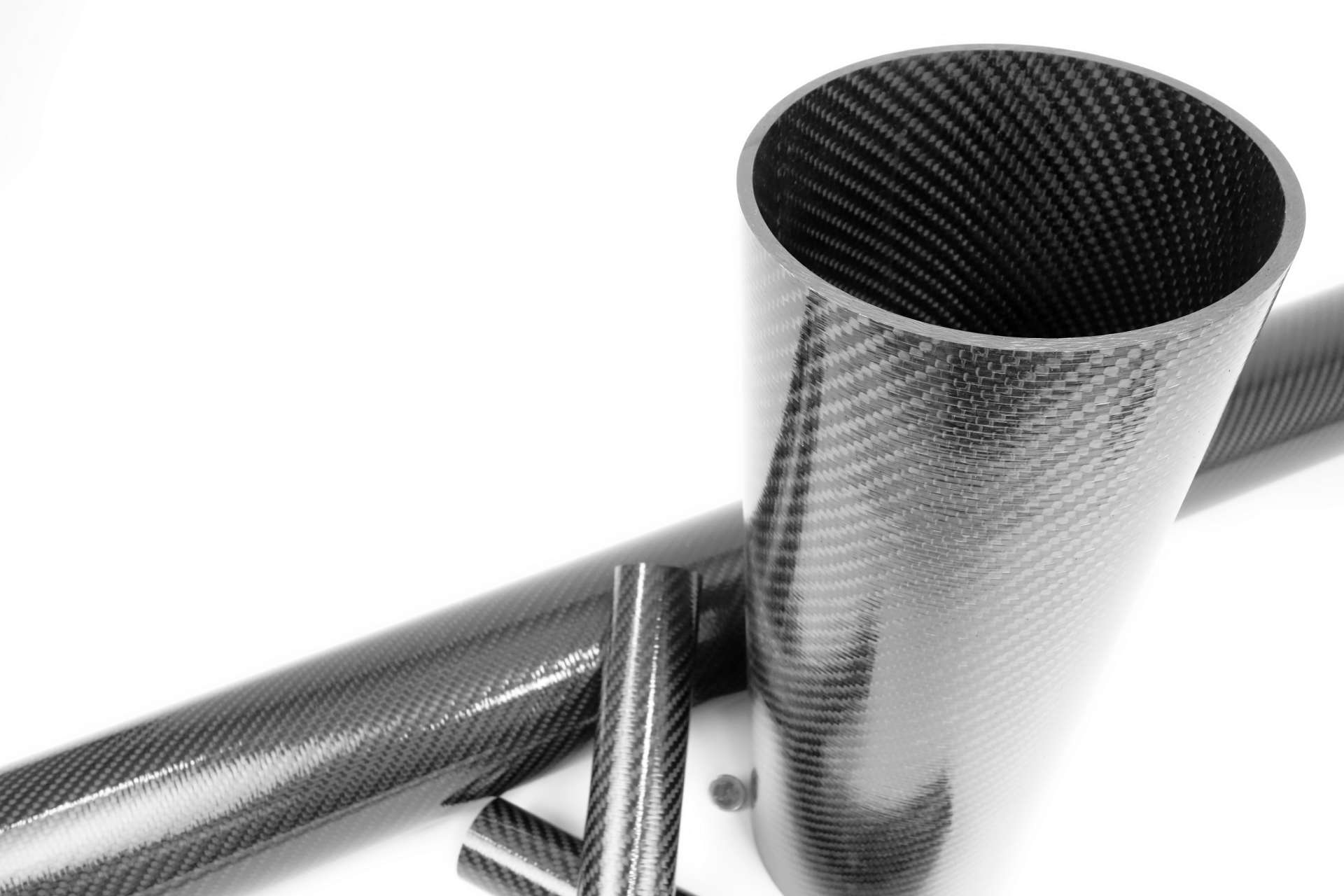
Når du arbeider med karbonfiberrør med stor diameter, er det avgjørende å oppnå en glatt og feilfri overflate. Enten du skal lage en luftinntaksrør i karbonfiber eller konstruere en rørramme i karbonfiberFor å oppnå dette må sluttproduktet ikke bare være sterkt, men også visuelt tiltalende. Ujevnheter i overflaten kan være til hinder for både ytelse og estetikk, spesielt i bransjer som er avhengige av komponenter av høy kvalitet, som romfart, bilindustri eller sportsutstyr. Her er en guide til hvordan du kan forbedre overflatekvaliteten på disse rørene.
1. Riktige produksjonsteknikker
Å skape karbonfiberrør krever mer enn bare de riktige materialene. Det er viktig å bruke de riktige støpe- og herdeprosessene for å unngå defekter. For store diametre karbonfiberrørspiller layup-metoden (hvordan fibrene legges i lag under produksjonsprosessen) en viktig rolle. Vær oppmerksom på antall lag og retningen på fibrene. Feil opplegg kan føre til ujevnheter som hulrom eller ujevne overflater.
For de som er interessert i hvordan man lager inntaksrør i karbonfiberFor å oppnå den jevnheten som er nødvendig for høyytelsesdeler, trenger du presise støpeteknikker. Et glatt ytre lag sikrer at røret ikke forstyrrer luftstrømmen, spesielt i applikasjoner som luftinntakssystemer. Jo glattere overflaten er, desto bedre blir funksjonaliteten og estetikken til det endelige produktet.
2. Sliping og polering
Sliping er et viktig trinn for å forbedre overflatefinishen på stor karbonfiberrør. Etter at rørene er herdet, kan de ha ujevnheter eller ujevne overflater. Begynn med grovt sandpapir og gå gradvis over til finere korn. Sliping jevner ikke bare ut overflaten, men bidrar også til å fjerne overflødig harpiks eller eventuelle rester av formfrigjøringsmiddel.
Når det gjelder skjæring av karbonfiberrørSørg for at skjæreprosessen ikke skaper frynsete kanter. Ved å bruke spesialsager med fine blader eller en vannstrålesklipper kan du minimere skader på kantene, noe som gir et renere og jevnere kutt.
3. Bruk av harpiks og gelcoat-lag
Etter sliping kan det være lurt å påføre en gelcoat eller et etterbehandlingslag av harpiks. Dette gjøres ofte når du lager firkantede rør av karbonfiber eller andre konstruksjonsdeler. Harpikslaget forsegler overflaten og fyller ut eventuelle mikroskopiske ujevnheter. Dette trinnet forbedrer ikke bare det koniske karbonfiberrørets visuelle utseende, men gir også ekstra beskyttelse mot slitasje, UV-skader og riper.
4. Påføring av klarlakk
For deler som vil bli utsatt for vær og vind eller som krever et ekstra lag med holdbarhet, kan man bruke en klarlakk etter sliping og polering er avgjørende. Dette er spesielt viktig for 4 tommers karbonfiberrør brukes i bil- og romfartsapplikasjoner der eksponering for tøffe forhold raskt kan bryte ned ubeskyttede overflater.
Klarlakken bidrar også til at røret ser mer polert og profesjonelt ut. Den tilfører en blank overflate som fremhever det koniske karbonfiberrørets naturlige tekstur og skaper et utseende av høy kvalitet.
5. Reparasjonssett for karbonfiberrør
Selv med forsiktig håndtering kan uhell skje. Sprekker, flis eller andre ujevnheter kan fortsatt oppstå. Heldigvis kan du bruke en Reparasjonssett for karbonfiberrør for å fikse disse problemene uten at det går på bekostning av tubens integritet. Disse settene inneholder vanligvis harpiks, herder og lapper, slik at du raskt kan reparere små skader.
Når du reparerer et rør, må du sørge for at reparasjonen er glatt og slipt skikkelig etter at harpiksen er herdet. Et godt reparert rør vil opprettholde både styrken og overflatekvaliteten som er nødvendig for bruksområder med høy ytelse.
6. Avanserte etterbehandlingsteknikker
For avanserte bruksområder, som f.eks. rørkoblinger i karbonfiber i ingeniørprosjekter, kan ytterligere etterbehandlingsteknikker som vakuumpakking eller autoklavherding kan brukes. Disse teknikkene bidrar til å fjerne luftbobler og sikre en jevn fordeling av harpiks, noe som gir en mye jevnere overflate.
7. Kjøpe karbonfiberrør av høy kvalitet
For de som ikke produserer sin egen karbonfiberrør med stor diameterkan det å velge riktig leverandør utgjøre en stor forskjell. Når kjøpe karbonfiberrørSe etter anerkjente leverandører som tilbyr produkter av høy kvalitet med velkontrollerte produksjonsprosesser. Dette sikrer at du starter med et rør som allerede har en bedre overflatefinish og færre ujevnheter å fikse.
8. Er karbonfiberrør mye lettere enn aluminium?
Ja, koniske karbonfiberrør er betydelig lettere enn aluminium. Denne egenskapen gjør dem ideelle for bransjer som romfart og bilindustri, der vektreduksjon er avgjørende. Når det gjelder forholdet mellom styrke og vekt, er karbonfiber langt bedre enn aluminium, og gir bedre ytelse uten å gå på bekostning av holdbarheten.
Konklusjon
Forbedring av overflatekvaliteten på karbonfiberrør med stor diameter handler ikke bare om estetikk, det har også direkte innvirkning på ytelsen. Enten du er skjæring av karbonfiberrør for et bestemt bruksområde, lage firkantede rør av karbonfibereller lage noe så spesialisert som en luftinntaksrør i karbonfiberVed å fokusere på kvalitetskontroll under og etter produksjonsprosessen sikrer du at sluttproduktet oppfyller de høyeste standarder. Husk at det er mer enn mulig å oppnå en perfekt overflatekvalitet - det er helt avgjørende for å skape komponenter i toppklasse, fra å bruke de riktige teknikkene til å velge de beste verktøyene og materialene.
Referanser:
1.Produksjonsprosessen for karbonfiberrør: Forskjeller mellom filamentvikling og pultrudering
2.Hvordan hjalp vi kunden vår med å løse produktproblemer med karbonfiberrørene våre?
3.Frigjør kraften i karbonfiberrør: Fremtiden for lette og fleksible teleskoprør
4.Forstå hardhets- og kompresjonstesting av karbonfiberrør
5.Hvorfor er karbonfiberrøret 50mm OD 47mm ID så populært?






6-svar